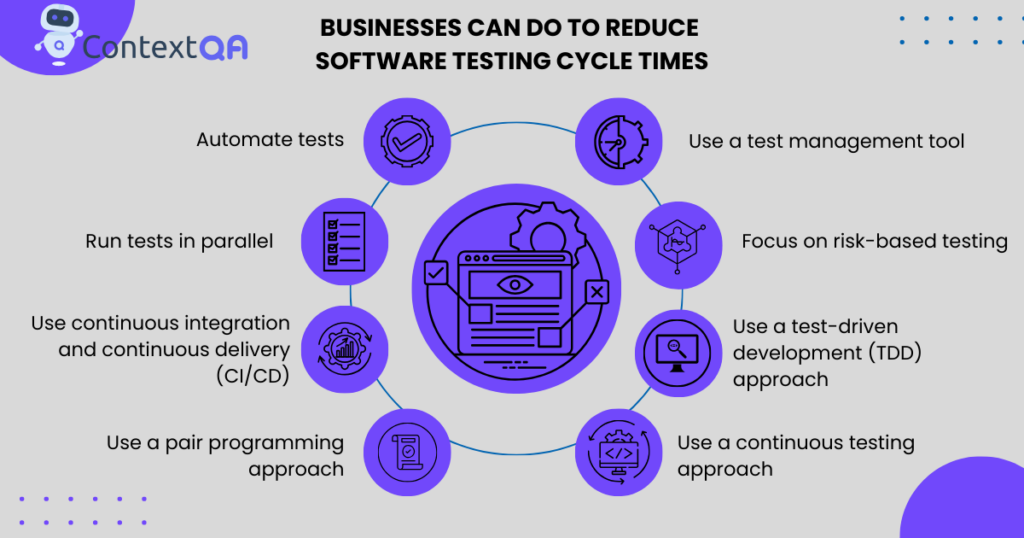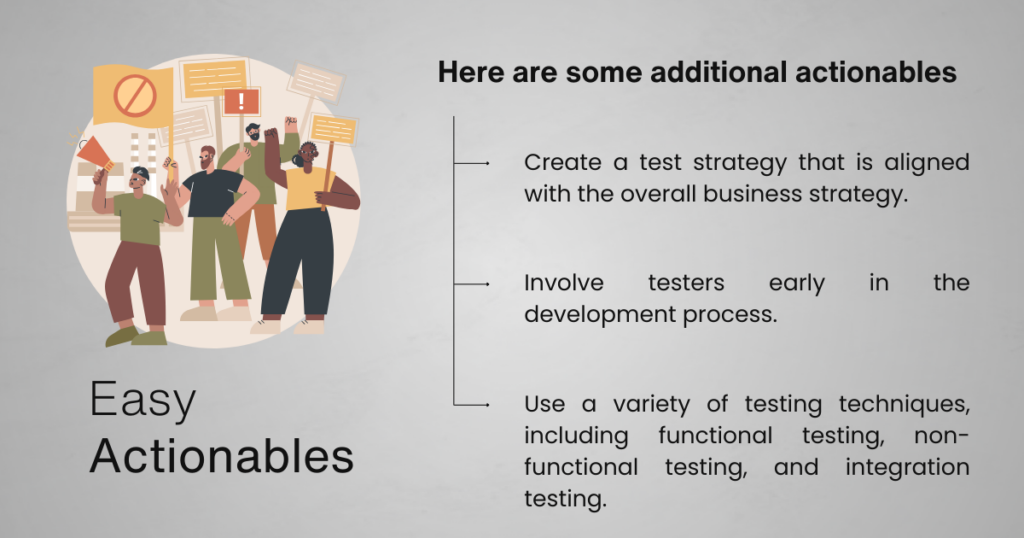Software testing is a critical part of the development process, but it can also be time-consuming. This is especially true for large and complex software applications.
In today's fast-paced world, businesses need to be able to release new software quickly and frequently in order to stay ahead of the competition.
This means finding ways to reduce software testing cycle times without sacrificing quality.
Businesses can do to reduce software testing cycle times:

There are a number of things that businesses can do to reduce software testing cycle times. Some of the most important include:
Automate tests
Test automation is one of the best ways to reduce software testing cycle times. Automated tests can be run quickly and repeatedly, which frees up testers to focus on more complex tasks.
Use a test management tool
A test management tool can help businesses to organize and manage their software testing process. This can help to identify and fix bottlenecks, and to track progress over time.
Run tests in parallel
Parallel testing allows businesses to run multiple tests at the same time. This can significantly reduce the overall testing time.
Focus on risk-based testing
Risk-based testing involves prioritizing tests based on the risk of defects. This helps to ensure that the most important tests are run first.
Use continuous integration and continuous delivery (CI/CD)
CI/CD is a set of practices that automates the software development and delivery process. This can help to reduce software testing cycle times by integrating testing into the development process.
Additional tips for reducing software testing cycle times without sacrificing quality
Use a test-driven development (TDD) approach
TDD is a software development process that involves writing tests before writing code. This helps to ensure that the code is designed with testing in mind.
Use a pair programming approach
Pair programming is a software development process in which two developers work together on the same code. This can help to identify and fix defects early on.
Use a continuous testing approach
Continuous testing is the practice of running tests throughout the software development process. This helps to identify and fix defects early on, before they become more expensive to fix.
In addition to the above, it is important to have a strong testing culture in place. This means having a team of testers who are passionate about quality and who are constantly looking for ways to improve the testing process.
Be in the 73%
According to a recent survey by Capgemini, Sogeti, and Micro Focus, 73% of organizations are using test automation to reduce software testing cycle times.
The survey also found that organizations that use test automation are able to reduce their testing cycle times by an average of 25%.
Another recent survey by Software Testing Magazine found that 84% of organizations are considering using continuous testing to reduce software testing cycle times.
The survey also found that organizations that use continuous testing are able to reduce their testing cycle times by an average of 30%.
Reducing software testing cycle times without sacrificing quality is a challenge, but it is possible. "The key to reducing software testing cycle times is to automate as many tests as possible." - Michael Bolton, CEO of Applitools.
By following the tips and advice above, businesses can reduce their testing cycle times without sacrificing the quality of their software.
Book a Demo and experience ContextQA testing tool in action with a complimentary, no-obligation session tailored to your business needs.
Easy Actionables

Here are some additional actionables that businesses can take to reduce software testing cycle times without sacrificing quality:
- Create a test strategy that is aligned with the overall business strategy. This will help to ensure that the testing effort is focused on the most important areas.
- Use a variety of testing techniques, including functional testing, non-functional testing, and integration testing. This will help to ensure that all aspects of the software are tested.
- Involve testers early in the development process. This will help to identify and fix defects early on, before they become more expensive to fix.
You may also be interested in: How to Implement Parallel Software Testing in Your Organization
We make it easy to get started with ContextQA tool: Start Free Trial.
